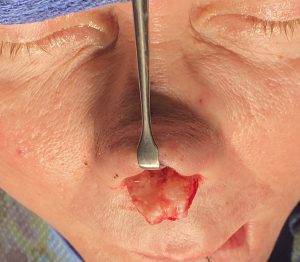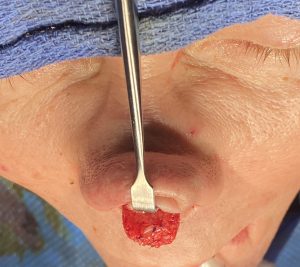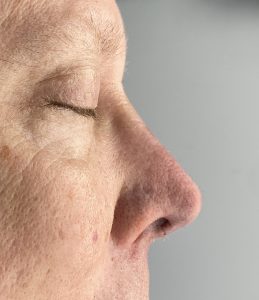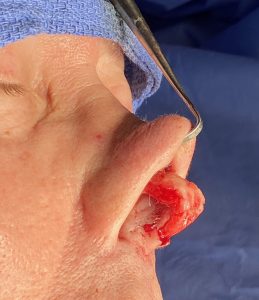Background: Rhinoplasty is one of the most well known aesthetic procedures in plastic surgery and has been performers in various ways for almost one hundred years. It is the original facial reshaping procedure as it focuses on a structural change to a prominent facial feature…the bone and cartilages of the nose. The nasal skin is separated from the osteocartilaginous framework so it can be reduced, augmented or both. The ultimate effects of this structural reshaping takes a fair amount of time to fully see as the overlying skin must eventually shrink back down over the new nasal shape.
As a facial reshaping procedure it is no surprise that many rhinoplasty patients are younger, most being in the age range of 18 to 45 years old. While this does not mean older patients do not under nose reshaping surgery, it is just a smaller percent of the total rhinoplasty population. Older patients ar less likely to undergo a structural facial surgery as they often have come to accept the shape of the face. (or to phrase it this way ….why change it now at this point in may life)
To clarify the term ‘older’ I am specifically referring to patients 60 years or older. Rhinoplasty is this population is uniquely different. While they may have some airway obstruction that requires management, aesthetically they often are focused on the tip of the nose. Whether the tip is wide, long or plunging age uniquely affects the tip as it is only attached to the fixed septum and upper lateral cartilages by ligamentous attachments…which can stretch with age. This can make the nasal tip get wider, longer and more downturned.
Case Study: This older male (early 60s) was undergoing a primary facial procedure and decided to add on a rhinoplasty as well. He wanted a less wide, less long and more uplifted tip.



While a male usually does not want an over rotated nasal tip in lifting the thick skinned nose over correction is usually needed. With the thick skin and postoperative swelling there is going to be some relapse in tip rotation.
Key Points:
1) Rhinoplasty in the older patient is as much about nose rejuvenation as it is about nose reshaping.
2) The primary focus on most older rhinoplasties is focused on nasal tip reshaping.
3) Recovery from tip rhinoplasties is usually painless and no bruising occurs around the eyes.
Dr. Barry Eppley
World-Renowned Plastic Surgeon





